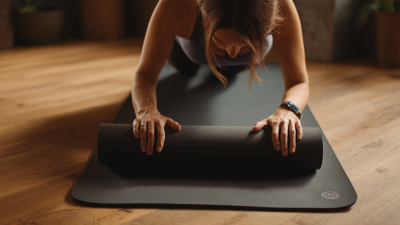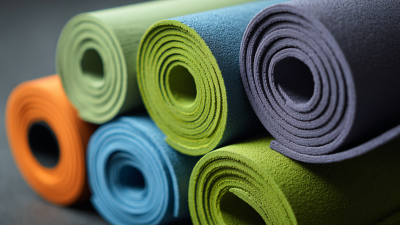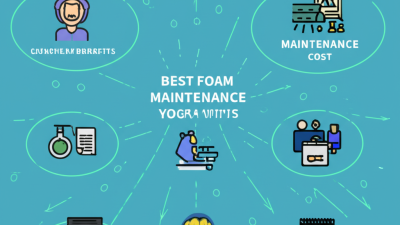Choosing the right Foam Yoga Mat can significantly enhance your practice and overall comfort. As industry expert and certified yoga instructor, Sarah Thompson, states, “A quality Foam Yoga Mat not only provides the right cushioning and support but also connects you with your practice on a deeper level.” With countless options available on the market, selecting the best foam mat can be overwhelming for both beginners and seasoned yogis alike.
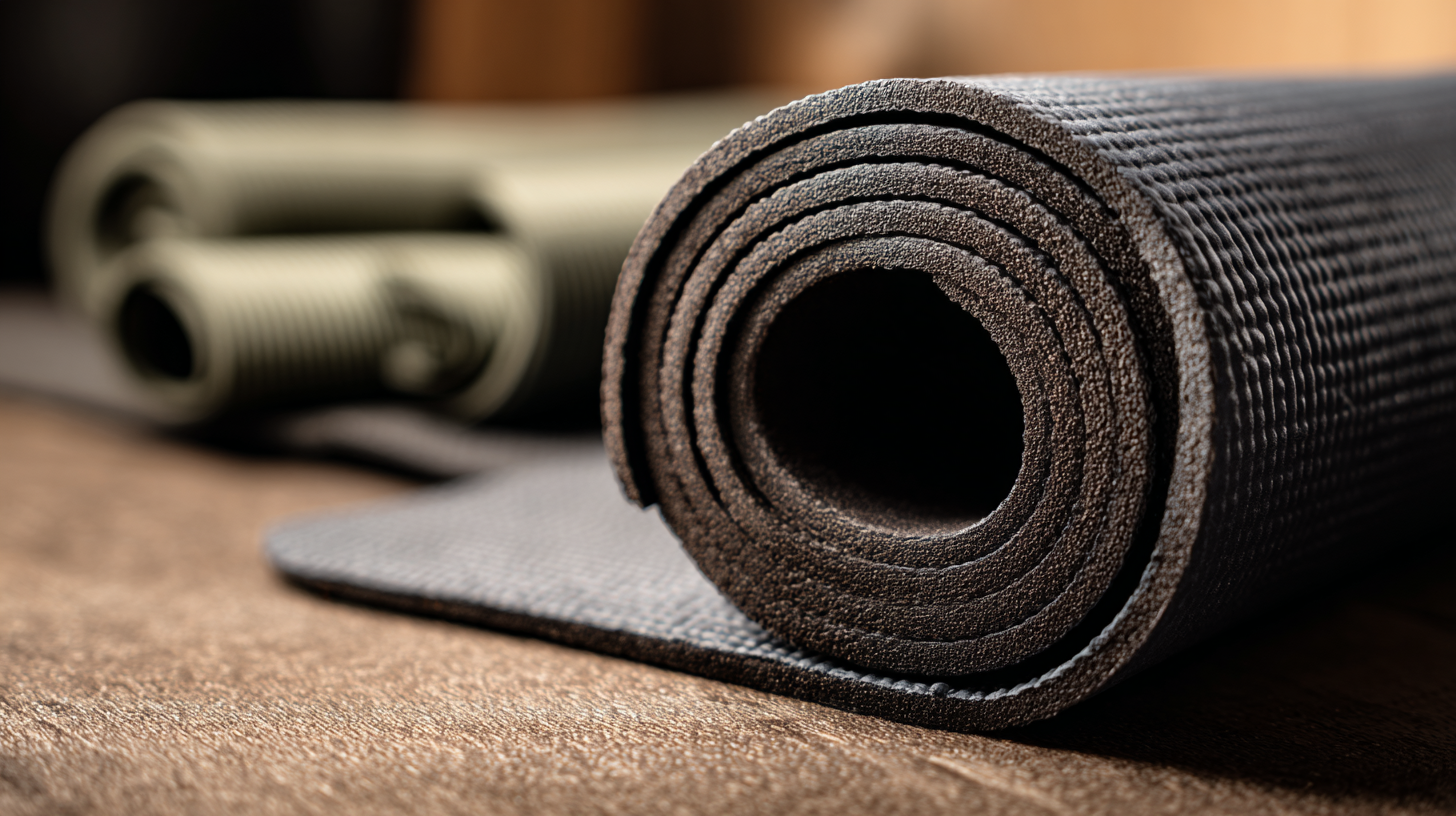
In this guide, we will explore the top five foam yoga mats that stand out for their durability, texture, and overall comfort. By considering factors such as thickness, material, and non-slip features, practitioners can make informed decisions that align with their personal needs and preferences. Whether you prioritize portability, eco-friendliness, or superior grip, finding the ideal Foam Yoga Mat can transform your practice into a more enjoyable experience, helping you achieve both physical and mental well-being on and off the mat.
When selecting the best foam yoga mat, several key features should be prioritized to enhance both your practice and comfort. First and foremost, thickness is a crucial aspect; a thicker mat provides greater cushioning for your joints, making it ideal for poses that require kneeling or sitting. Generally, a mat ranging from 4 to 6 millimeters in thickness strikes a balance between support and stability, allowing for both comfort and control during balances.
Another important feature to consider is the material of the mat. High-density foam is often preferred for its durability and resilience, providing a non-slip surface that keeps you stable in various poses. Additionally, look for mats that are made from eco-friendly materials free of harmful chemicals, as this not only benefits your health but also contributes to environmental sustainability. Lastly, a textured surface can enhance grip, preventing slipping during intense sessions and ensuring you maintain a secure footing, which is crucial for safety and effectiveness in your yoga practice.
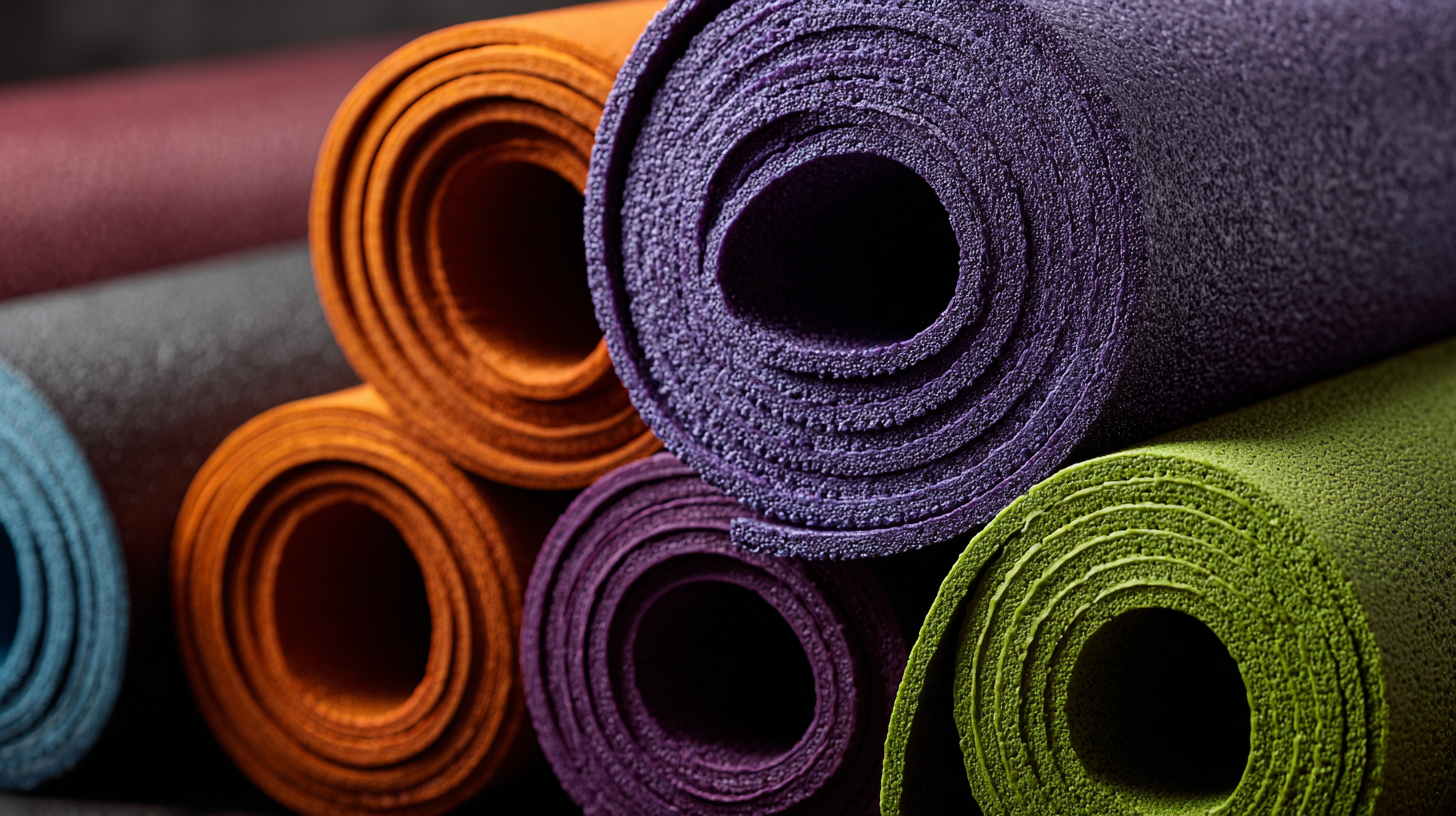
When selecting a foam yoga mat, the thickness is a crucial factor that can significantly influence both comfort and stability during your practice. Generally, mats are available in three standard thicknesses: thin (1/16 inch), medium (1/8 inch), and thick (1/4 inch). A thin mat offers better stability and allows you to feel grounded during poses, making it a suitable choice for more experienced yogis who prioritize balance and precision. However, this option may not provide adequate cushioning for extended sessions or for those with sensitive joints.
On the other hand, thicker mats are ideal for individuals who require extra support, especially during restorative practices or for those new to yoga. A 1/4-inch mat cushions your body, which can help alleviate stress on the knees and wrists. However, it may compromise stability, especially in standing poses. A medium-thickness mat strikes a balance between cushioning and stability, making it a versatile option suitable for various styles of yoga. Ultimately, the right thickness for your mat will depend on your personal comfort, preferred style of practice, and any physical considerations you may have.
When selecting a foam yoga mat, it is imperative to prioritize eco-friendly materials that ensure both comfort and sustainability. According to a report by the Yoga Alliance, more than 70% of yoga practitioners now consider the environmental impact of their mats, indicating a significant shift towards mindful consumption in the fitness industry. Eco-friendly mats are typically made from natural rubber, TPE (thermoplastic elastomer), or recycled materials, which not only provide effective cushioning but also reduce carbon footprints.
Natural rubber mats, for instance, are biodegradable and offer excellent grip, making them a preferred choice for many yogis. A study published in the Journal of Environmental Science and Technology highlights that rubber mats can last twice as long as traditional PVC options, reducing waste over time. Additionally, TPE mats are free from toxic chemicals often found in synthetic alternatives, aligning with the increasing demand for healthier, non-toxic products. Both materials contribute to a more sustainable practice, ensuring that comfort and environmental responsibility go hand in hand. By choosing eco-friendly foam yoga mats, practitioners can enhance their experience while supporting a greener planet.

When selecting a foam yoga mat, performance and durability are crucial factors to consider. The best mats not only provide sufficient cushioning for comfort during practice but also offer stability and grip to prevent slipping. One standout option is the Liforme Yoga Mat, known for its eco-friendly materials and excellent non-slip surface, making it perfect for both beginners and advanced practitioners. The alignment guide printed on the mat also helps maintain proper posture during sessions.
Another top contender is the Manduka PRO Yoga Mat, which is celebrated for its dense cushioning and lifetime durability. Made with high-density PVC, this mat provides comfort and traction while being resistant to wear and tear from daily use. The high-quality construction ensures it can withstand intense practice routines, making it a worthy investment for serious yogis. Lastly, the Gaiam Cork Yoga Mat combines a unique cork surface for grip with a cushioned foam base, providing an aesthetically pleasing and functional option that enhances any practice.
| Yoga Mat | Thickness | Material | Durability Rating | Weight | Price Range |
|---|---|---|---|---|---|
| Eco-Friendly Foam Mat | 6 mm | TPE | 4.5/5 | 2.5 lbs | $40 - $60 |
| High-Density Foam Mat | 8 mm | PVC | 4/5 | 3.1 lbs | $35 - $55 |
| Lightweight Travel Mat | 4 mm | NBR | 3.5/5 | 1.5 lbs | $20 - $35 |
| Non-Slip Foam Mat | 5 mm | Natural Rubber | 4.7/5 | 3.0 lbs | $50 - $70 |
| Thick Comfort Mat | 10 mm | EVA | 4.2/5 | 3.5 lbs | $45 - $65 |
When selecting a foam yoga mat, the balance between price and quality is essential for ensuring both comfort and durability during your practice. A lower-priced mat may seem appealing initially, but often compromises on cushioning and grip, leading to discomfort and potential injuries. It’s vital to consider how frequently you practice and the type of yoga you engage in—more rigorous styles may demand a higher-quality mat to withstand the wear and tear associated with intense movement.
Investing in a quality foam yoga mat can enhance your overall experience. A well-made mat provides adequate support, reduces the risk of slipping, and maintains its shape over time. When assessing value, look for materials that are eco-friendly, non-toxic, and free from harmful chemicals, which can elevate your practice both in comfort and health. While it may require spending a bit more upfront, the longevity and improved performance of a higher-quality mat will serve you better in the long run, making it a wise investment for yoga enthusiasts.
